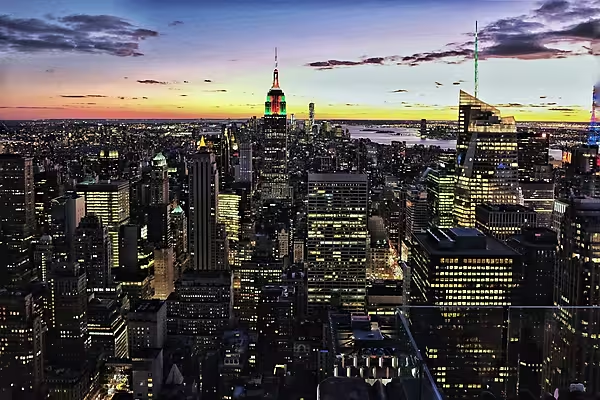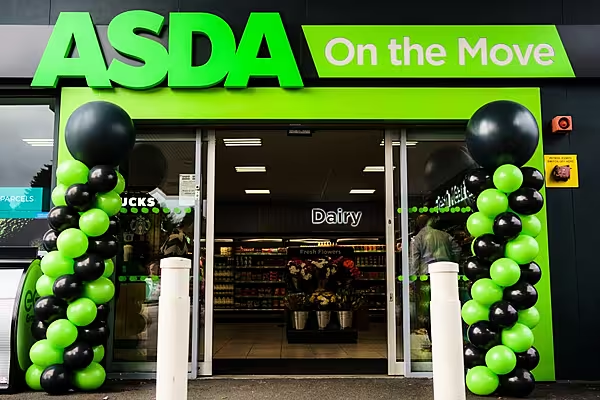Unemployment in the U.S. is really low. So are gasoline prices. Inflation is basically nonexistent. Home values continue to rise. There are legitimate wage gains. The stock market is up for the year and close to an all-time high. All this has pushed one measure of consumer confidence to the highest level in about a decade.
“Every metric related to the consumer is healthier now than it was the past couple years,” said John Kernan, an analyst for Cowen & Co. “The consumer is in a very good position right now.”
Just don't try to tell the good news to executives at some of the oldest and biggest U.S. retail chains. Weary leaders have adopted an environmental refrain to help explain away weak results. For Target Chief Executive Officer Brian Cornell, it was the “challenges we are facing in a difficult retail environment.” Gap sees it the environment as “tough,” said CEO Art Peck, while Abercrombie & Fitch Chairman Arthur Martinez has experienced the same conditions as “challenging.” The phrase has been adopted by dollar-store chains (Dollar Tree CEO Bob Sasser: “It is a fairly challenging retail environment”) and the parent company of Men's Wearhouse (Tailored Brands CEO Doug Ewert: “The increasingly uncertain consumer and retail environment”). Barnes & Noble CEO Len Riggio has minced no words. “The retail environment is not good at this moment,” he said. “In fact, it’s terrible.”
Lurking behind the cliché is a hard truth these executives are eager to avoid. “All this pleading that the consumer isn’t spending is an excuse, largely from management teams whose product is less relevant,” Kernan said. “The consumer is actually driving the U.S. economy, so it’s a little ridiculous when we hear the excuse of the macro environment is not good.”
So it’s a challenging environment for these specific companies, says Ken Perkins, president of researcher Retail Metrics, not consumer spending as a whole. Amazon.com is an obvious problem for almost every established retailer, thanks to surging growth and market share gains.
Then there are the upstart brands such as Bonobos or Fabletics that have collectively steered $200 billion in annual sales away from big chains over the last five years, according to research from Deloitte. Another hurdle that isn’t going away is the shift to increased spending on experiences such as travel and classes, which make for much better posts on Instagram, Facebook, and Snapchat. “Social media has really fostered a have-done environment, which is not what retailers sell,” Perkins said.
Retailers in the U.S. looked to be a pretty sure bet for a big comeback after the Great Recession. The thinking then was that the economy would grow for several years, creating jobs and plenty of demand for shopping that would lift the chains that had taken such a beating during the downturn. That’s the way it had worked in the past.
Those first two things have happened in the U.S., but after seven years, the expected retail boom hasn’t arrived. From the looks of recent results and bankruptcies, it may never come. What’s especially troubling for the industry is that the combination of low inflation, low unemployment, and rising wages should be fertile ground for success.
The firm Perkins founded in 2004 has a weighted index that tracks same-store sales performance of publicly traded retail chains. For the most part it has tracked the U.S. economy. It had a big decline during the recession and then rebounded. But at the beginning of last year, it diverged: The economy continued to grow while same-store sales, including online revenue, for many longstanding chains declined or drastically slowed.
One characteristic of these struggling brick-and-mortar chains has been direct competition with Amazon. If they don’t go head-to-head with the online giant, they rely heavily on people visiting shopping centers anchored by retailers that do, such as ailing department-store chains Macy’s and Sears. One measure of store visits in the U.S. paints a dire picture, with only a dozen positive weeks over the past two years.
Perkins points to the past few Christmas shopping seasons, when a surge in online orders overwhelmed UPS and FedEx. Perkins looks back now and sees a profound shift that points to a big loser. When Americans are most focused on discretionary spending, he notes, their preference for online shopping floods the supply chain. "That felt like the tipping point, and it’s only accelerated,” Perkins said.
So it’s not going to be pretty when the U.S. economy stops expanding and Americans actually cut their spending. “A bloodbath,” predicted Kernan, the Cowen analyst. “It’s only going to get worse."
News by Bloomberg, edited by ESM. To subscribe to ESM: The European Supermarket Magazine, click here.














